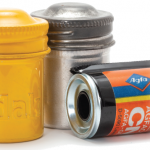Deborah A. McCloskey, RN, BSN, nursing care coordinator of the Scleroderma Program at the University of Medicine and Dentistry of New Jersey, in New Brunswick, agrees. “Forming a PAC is a great idea and a major accomplishment,” she says. “We deal with diseases that are relatively small in numbers. Forming a PAC will give us a louder voice at the table. If we want to maintain a place so we can influence legislators on behalf of our practice and our patients, this is the right thing to do.” McCloskey is co-chair of the ARHP advocacy committee.
The Fine Print
A complex series of laws and regulations affects contributions to political candidates and legislators. (The Federal Election Commission “Campaign Guide” fills 134 pages.) Since the ACR is a 501(c)(6) organization, it is able to form a PAC as a standing committee of the parent organization. The ACR’s PAC will be overseen by a committee of nine members, each serving a four-year term with the opportunity to serve two additional terms. It is organized as a “Separate Segregated Fund,” which means that all contributions to the PAC go into a separate bank account, and are not comingled with ACR general funds.
Like any other political action committee, the new rheumatology PAC will be subject to financial limits under federal law. It will be able to contribute up to $5,000 to any one candidate during a primary election campaign, and then another $5,000 during the general election.
“The ACR Government Affairs Committee will continue to examine proposed legislation and any political issues that concern rheumatologists,” explains Wormley. “The Political Action Committee will review contributions and campaign finance reports, and ensure that ACR complies with all regulations on political contributions.”
In addition, ACR contracts with Patton Boggs, a Washington, D.C.-based advocacy law firm, to serve as its outside counsel. The PAC, with advice from the Government Affairs Committee and Patton Boggs, will determine which legislators and candidates should receive contributions from ACR.
ACR members in the United States will soon receive information about the new PAC, suggesting various ways they can become more involved in the political process on behalf of rheumatology. “Some of the other specialty societies such as orthopedics and radiology have been particularly effective in getting their message across, and I believe their political action committees have played an important role in this process,” says Stuart Kassan, MD, of Colorado Arthritis Associates in Denver. “The bottom line is that a political action committee will allow us to advocate most effectively for our patients, for the specialty, and for science.”
